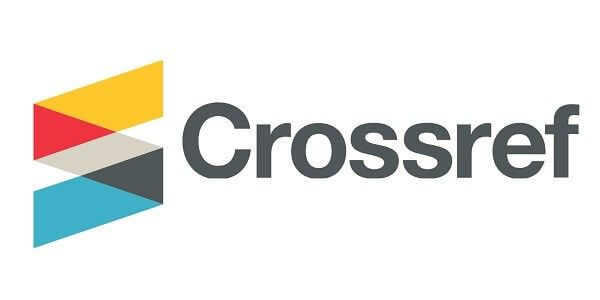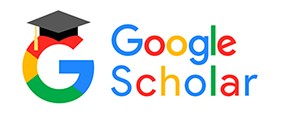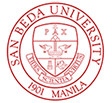The Poetic Expression of Gay Lexicon Conveyed through Imagery in Lines of Poems
Keywords:
gayspeak, poetics, translytic poetry, literarinessAbstract
The focus of this study revolves around gay literature, specifically the poetics related to homosexuality. Gay literature includes literary works authored by individuals who identify as gay, as well as literary works by heterosexual writers that explore or discuss homosexual themes, and literary works that incorporate gay terminology. While there have been recent studies on gay literature and works, there has been a lack of attention given to gayspeak, which can be referred to more formally as a lavender lexicon, being incorporated into texts or selections that are thought to have literary significance. The study seeks to address how gayspeak is depicted in literature. Are there poetic elements present in texts that use gayspeak? The study seeks to determine the potential impact of homosexual poetics or gay speak on the advancement of literature and the teaching of literature, particularly about its literary qualities. The study utilized a limited selection of only two poems due to the scarcity of available poetry incorporating gay language. Every poetry in the collection is accompanied by translations in Filipino and English, which accurately convey the original phrases written in gayspeak. The poems were assessed based on their poetic substance and the extent to which the language used in the poem's lines demonstrates literary qualities, which is the study's primary objective. The analysis of these poems involved the application of established theories and research, such as Shklovsky’s concept of Defamiliarization (2004) and the Imagery and Symbolism concept by Dimalanta and Abad (2003). Gay language in poetry has literary qualities, conveying meaning through imagery. It enhances comprehension of a poet's work and creative process. Studying imagery provides insight into the poet's production and interpretation of the text, whether written in standard or specialized language.
References
Alba, R. (2006). The Filipino gayspeak (Filipino Gay Lingo). http://www.ncca.gov.ph/http://www.ncca.gov.ph/about-culture-and-arts/articles-on-c-n-a/article.php?i=289&subcat=13. Retrieved 17 September 2011.
Ang, S. (2010). Ang Bekimon (Baklang Jejemon). http://pinoylgbt.com.http://pinoylgbt.com/ang-bekimon-baklang-jejemon/. Retrieved 17 September 2011. "GAY SPEAKS on "SWARDSPEAK"". http://badinggerzie.blogspot.com. May 13, 2005.
Angles, J. (2009). Queer Nonsense: Aestheticized Homoeroticism in Inagaki Taruho’s Early Stories. Japan Forum, 21, 17-21. DOI: https://doi.org/10.1080/09555800902857088
Brooks, C. (1991). Historical evidence and the reading of seventeenth century poetry.
Casabal, N. (2008). Gay language: Defying the structural limits of English language in the the Philippines. Kritika kultura: A Referred Electric Journal of Literary/Cultural and Language Studies, 1656, 89-109. DOI: https://doi.org/10.3860/kk.v0i11.754
Clark, J. (2010). HIV/AIDS, aging, and diminishing abilities: Reconfiguring gay masculinity in Literature and Theology. The Journal of Men’s Studies, 18, 137-144. DOI: https://doi.org/10.3149/jms.1802.137
Corso, A. (2006). That’s so gay! Rethinking writing poetry in an all-male secondary classroom. International Journal of Learning, 10, 167-174.
Crandall, et al. (2011). Symposium: Gay poetry, politics, poetics. Beloit Poetry Journal, Summer, 41-46.
Crawford, L. (2008). Victor Shklovskij: Différance in Defamiliarization. Comparative Literature 36: 209-219. DOI: https://doi.org/10.2307/1770260
Dilley, P. (1999). Queer Theory Under Construction. Qualitative Studies in Education, 12, 457-472. DOI: https://doi.org/10.1080/095183999235890
Dimalanta, O. & Abad, G. (2003). Frequently Asked Questions About Poetry. UST Press.
Fox, R. (2010). “Ragan Fox is a gay slam poet”: An autobiographical exploration of performance poetry’s performative implications. Test and Performance Quarterly, 30, 420-429. DOI: https://doi.org/10.1080/10462937.2010.508535
Ginsberg, A. (2003). Toward a gay poetics. Intersections in Psychoanalysis and American Poetry. 15-21.
Lewis, C. D. (1992). The Poetic image book.
Lewis, W. (2003). Collected poems and plays.
Lim, J. (2009). Philippine gay language: A Pidgin. 3-4.
Llorens, D. (2011). The analysis of poetic imagery. pp. 2-10. Martin, R. (1997). Gay Literature. Oxford University Press. 449-454.
Maruja, E. (2007). Deciphering Filipino Gay Lingo. United SEA. http://unitedsea.blogspot.com/2007/07/deciphering-filipino-gay-lingo.html. Retrieved 17 September 2011.
McCormick, T. (2009). A Queer analysis of the discursive construction of gay identity in Gayle: the language of kinks and queens: a history and dictionary of gay language in South Africa. Southern African Linguistics and Applied Language Studies. 27(2), pp. 149–161. DOI: https://doi.org/10.2989/SALALS.2009.27.2.3.866
Pound, E. (2004). Selected Poems of Ezra Pound.
Remoto, R. (2008). On Philippine gay lingo. http://www.abs-cbnnews.com. http://www.abs-cbnnews.com/views-and-analysis/05/05/08/philippine-gay-lingo-danton-remoto. Retrieved 17 September 2011.
Salao, J. (30 April 2010). Gayspeak: Not for gays only. http://www.thepoc.net. http://www.thepoc.net/thepoc-features/buhay-pinoy/buhay-pinoy-features/6340-gayspeak-not-gor-gays-only.html. Retrieved 17 September 2011.
Sapp, J. (2010). A review of gay and lesbian-themed early childhood children's literature. Australian Journal of Early Childhood, 35, 32-40. DOI: https://doi.org/10.1177/183693911003500106
Shklovsky, V. (1990). Art as Technique: pages 15-21 Literary Theory: An Anthology. Blackwell Pub, 2004.
Shklovsky, V. (1990). Art as Device, 20, in Theory of Prose, translated by Benjamin Sher, Dalkey Archive Press.
Suguitan, C. (2005). A Semantic look at feminine sex and gender terms in Philippine gay lingo.
Watson, D. (2010). Exploring Social Connectivity Through the Use of Adolescent Queer Literature. American Journal of Sexuality and Education, 5, 274-276. DOI: https://doi.org/10.1080/15546128.2010.503863
Wellek, R. (1986): A history of modern criticism. Vol.5, pp.1750-1950.
Woods, G. (2002). Educationally Queer: Teaching lesbian and gay studies in higher education. Changing English, 9, 43-56. DOI: https://doi.org/10.1080/13586840120112323
Wong, A. (2005). New directions in the study of language and sexuality. Journal of Sociolinguistics. pp.254-266. DOI: https://doi.org/10.1111/j.1360-6441.2005.00292.x
Yannucci, L. (n.d.) Philippines children's songs and nursery rhymes. http://www.mamalisa.com/. http://www.mamalisa.com/?t=es&p=1017&c=20. Retrieved 17 September 2011.
- PDF | 158
- Abstract Views | 327
Published
How to Cite
Issue
Section
Copyright (c) 2024 Larry Ambion

This work is licensed under a Creative Commons Attribution-NonCommercial-NoDerivatives 4.0 International License.











